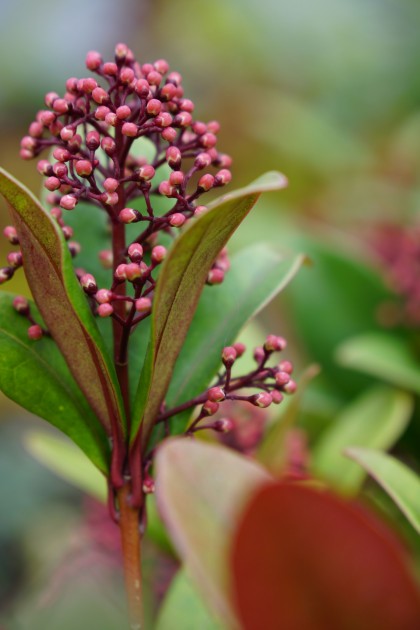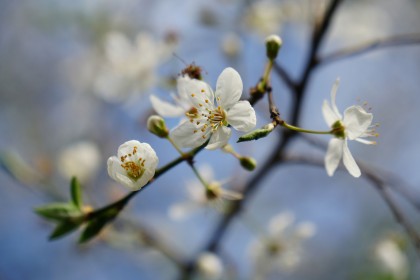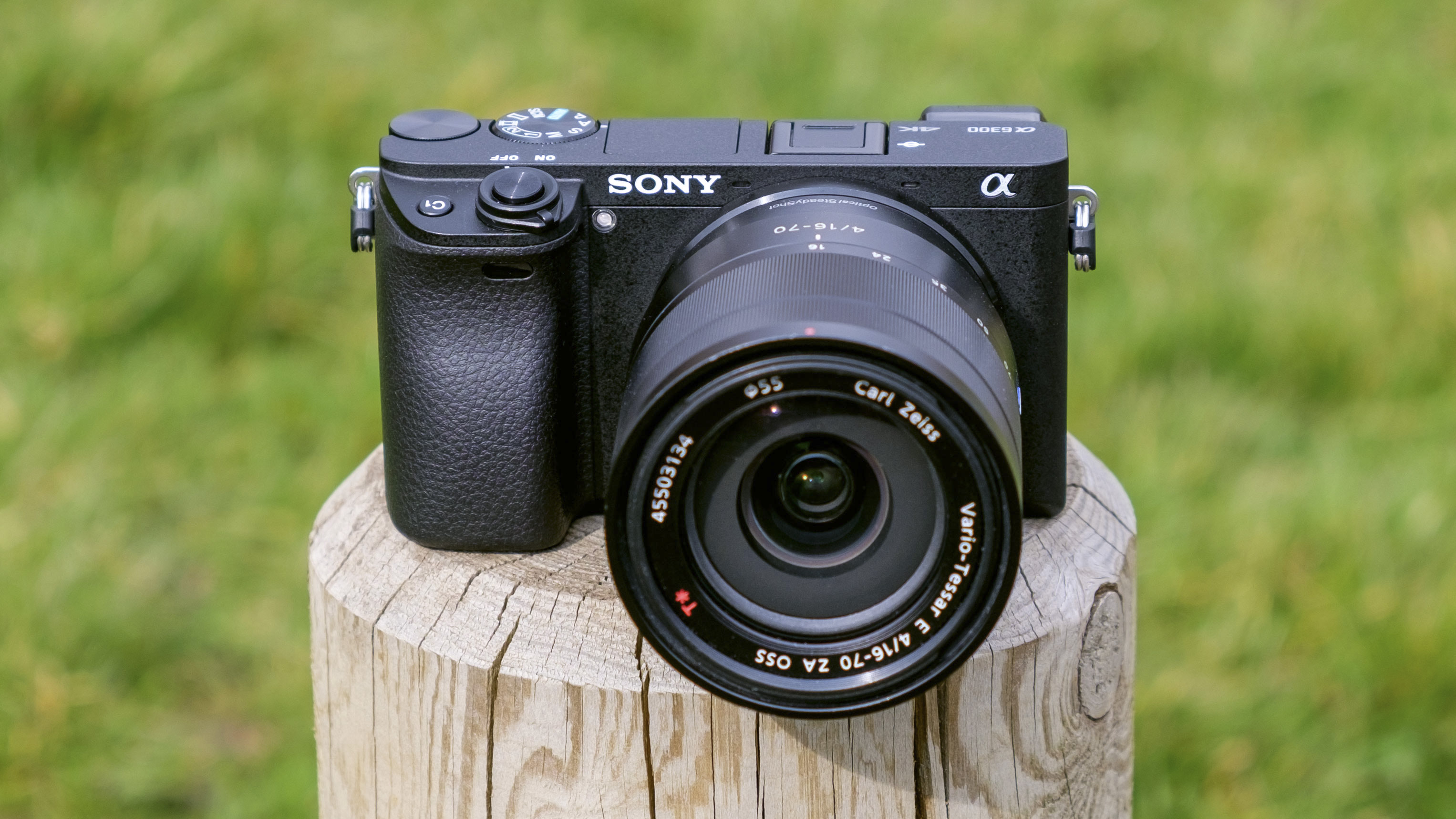Why you can trust TechRadar
Although the A6000's viewfinder was a capable performer it's still welcome to see this component upgraded on the Sony A6300, given how key a part of the camera it is. As someone who doesn't wear glasses I found its eye-point to be in just the right spot for me when held at a comfortable distance away. The panel's resolution provides very good clarity and contrast is high, and although noise and lagging increased in darker conditions I still found it perfectly usable.
The on-screen (shooting) display of the LCD is large and clear, and the fact that images captured in the standard 3:2 aspect ratio do not occupy the entirety of the screen helps, as the black borders on either side allow for most of the secondary shooting information to stand out (the rest is superimposed on the image).
The screen itself appears somewhat underpowered when used outside, however, even under overcast conditions. Switching the camera to the Sunny Weather option, or brightening the display manually, is a great help, although this obviously comes at the expense of battery life.
Although the camera doesn't quite offer the near-instant start-up time of a similar DSLR, it's not so far behind that it makes any difference in all but critical situations.
Click here for the full-resolution image

Click here for the full-resolution image

Click here for the full-resolution image

Click here for the full-resolution image
Sony states that the A6300 can shoot 21 consecutive raw frames or the same number of Raw+JPEG frames, and 44 JPEG frames at the highest quality setting. In practice, the camera easily met all of these targets, even exceeding them by the odd frame, although slower memory cards may throttle this.
Helpfully, the camera also remained operational while writing images to the card, not fully functional but often allowing a few subsequent frames to be captured as these were being dealt with.
The revamped focusing system is one of the A6300's main highlights, so does it deliver on the high expectations? Largely, yes. In good light it brings subjects to focus with very little delay, refocusing whenever the lens is zoomed to an approximate point so that focusing takes as little time as possible when initiated by the user.
The camera also willingly deploys the AF assist light wherever it feels it needs to, which helps to keep focusing speed swift in poorer light.

Click here for the full-resolution image

Click here for the full-resolution image
The high number of phase-detect AF points, and in turn their density, also plays a significant part in ensuring that moving subjects are tracked successfully – and performance here is strong. As soon as focus is acquired, the relevant number of points dance around the subject, and continue to adhere as the subject or camera moves.
I found this appeared to work very well whether the subject was moving towards or away from the camera, roughly along the optical axis, or if it was moving across the frame. In the latter case the camera would, more often than not, continue to track the subject as it approached the very edge of the focusing array (it doesn't stretch right up to the peripheries, but close enough), and it managed to do this with subjects moving at a variety of speeds.
Although I could appreciate how well the A6300 did from monitoring the focus points' movement at the time of capture, examining my images afterwards showed that while it did occasionally leave the subject, and sometimes move instead to a flat, featureless area that you wouldn't ordinarily expect would present any kind of distraction, on many occasions it successfully managed to make its way back to the subject. On other occasions it did not, although the overall hit rate showed the system to be highly capable in such scenarios. Overall, when it works well – and it usually does – it works very well indeed.

Click here for the full-resolution image

Click here for the full-resolution image

Click here for the full-resolution image
The 8fps burst shooting mode will be a popular option for those coming from DSLRs, given how it's not possible to appreciate exactly when images have been captured using the faster 11fps mode. Of course, the sound from the shutter gives you some idea, but the lack of a visible cue does result in the disconnect that Sony has attempted to remedy with the slower option.
There is an even slower 'Lo' option, which fires at three frames per second, although whichever mode you use the constant presence of the focusing points and their movement keeps you updated on how accurately the camera is keeping up on the subject. It's a shame, however, that only the Lo option can be used in conjunction with silent shooting, as you may want to use the faster options when capturing live subjects.
The Sony A6300's metering system is largely reliable, with just an occasional bias towards underexposure. Often this would only be around half a stop or so away from what was expected, so could easily be rectified either with exposure compensation or in post-capture raw processing.
The camera's auto white balance system also did very well to faithfully reproduce colours in a range of conditions, even impressing under typically problematic artificial sources.

Click here for the full-resolution image

Click here for the full-resolution image
The quality of JPEGs straight out of the camera is very good. Images show good sharpness, contrast and colour next to raw files, although the raw files are generally well coloured to begin with, so the difference here is not as significant as usual.
JPEGs also show that the DRO system does well to slightly bring up shadow areas, to make images more suitable for immediate use.
Noise is generally well controlled across the range, and images are perfectly usable even at higher settings such as ISO6400. My only reservation is the camera's Normal noise reduction setting, which appears somewhat heavy handed in its approach to high-ISO images; thankfully, a Low setting and the option to disable the feature completely are on offer.
With the Sony E 16-70mm f/4 Carl Zeiss Vario-Tessar T* ZA OSS mounted the level of detail in raw files is very good, with a pleasing consistency across the frame when the lens is stopped down to a mid-range aperture. Many users, however, are likely to be using the camera in conjunction with the Sony E 16-50mm f/3.5-5.6 PZ OSS kit option, which I didn't have access to for this review.
Overall video quality from the A6300 is excellent. Footage shows plenty of detail and motion is nice and smooth, and there are no obvious artefacts present in footage captured under balanced conditions. Even in lower light, where noise patterning starts to take hold, footage shows just a slight texture rather than being swamped with unsightly coloured noise. If you're viewing results on a display with a resolution lower than 4K, you're also likely to see such imperfections to a lesser degree.
Audio quality in videos is also decent, with a clean sound and good balance between bass and treble. As with many other cameras, it is somewhat susceptible to the battering sounds of wind noise, although using an external microphone with a deadcat or a similar windshield is possible.
Sadly, it's not possible to use the Sunny Weather setting when recording in 4K, which means the aforementioned screen brightness issues rear their head.
